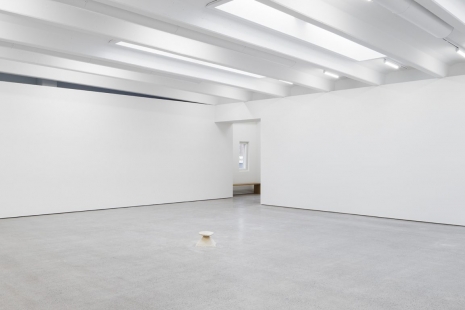Continuing the strand of our programme that introduces internationally visible younger and mid-career artists to Finnish audiences – among them Donna Kukama (South Africa) in 2017, Aslan Goisum (Chechnya) in 2018, Emily Wardill (England) in 2019, Yane Calovski (North Macedonia) in 2020 and Oscar Chan Yik Long (Hong Kong) in 2021 – Barateiro’s solo exhibition contains both existing pieces (allowing viewers to form an understanding of his practice to date) and new work (allowing him to creatively engage with Kohta).
Barateiro has been active on the international circuit since his first biennial participations some 15 years ago (Busan in 2006, Berlin and Sydney in 2008, followed by São Paulo in 2010 and Sharjah in 2016) and has had solo exhibitions at institutions such as Serralves Museum of Contemporary art in Porto in 2009, Kunsthalle Basel and Kunsthalle Lissabon in 2010, Kettle’s Yard in Cambridge, England, in 2013, REDCAT in Los Angeles in 2016 and Netwerk in Aalst, Belgium, in 2017. In March 2022, just after the exhibition at Kohta, he will open a solo exhibition at CRAC Alsace in Altkirch, France. Barateiro is represented by Galeria Filomena Soares in Lisbon.
His practice embodies a fundamental tension of the current ‘information age’, between our ability to derive inspiration from easily accessed knowledge and our longing for the unknowable, that which can only be approximated through making and doing. He has always been both a communicator/mediator/impersonator – notably in his frequent performances and lecture-performances – and a studio artist of an almost classical modernist bent, with drawing, sculpture and painting on his repertoire.
It is not for nothing that Barateiro once titled an essay ‘The Artist as Spectator’ and that cartoonish ‘data monsters’ keep appearing in his recent visual output. These may be allegorical snipes at the much-lauded ‘entrepreneur’ (who, in turn, may stand in for the contemporary data-driven artist) but they also have a distinctly hand-drawn look.
The two animated films by Barateiro shown at Kohta offer glimpses of a similar monster: a cerebral, increasingly disembodied and featureless creature easily saddened by its own self-representation as image, word and sound. Monologue for a Monster (2021, 6’50”, with the voice of Portuguese singer-songwriter Conan Osiris and English subtitles) is at the same time more discursive and more abstract than A Letter to You (2020, 10′, with ASMR or ‘brain massage’ sounds and English subtitles), for which various monstrous characteristics have been distilled into one single visual motif, that of blinking eyelashes without eyes.
The monster is portrayed as a figure of thought, both frightening and pitiable. Indeed, if we follow the etymological thread of ‘monster’ past the Latin monere (‘to remind, bring to recollection, admonish, advise, warn, instruct, teach’) we eventually arrive at a reconstructed Indo-European verb that means ‘to think’.
For Barateiro, artistic thinking is too important to be taken altogether seriously. On the blog the-sad-savages.tumblr.com he launches, with some regularity, images of book covers from the imprint Duvida Press that look like they could have been advertised by some Canadian university on the cheaper pages of The New York Review of Books. But duvida (with the stress on the first syllable) means ‘doubt’ in Portuguese, and we have reason to suspect that titles such as Life without Notifications by Sonia de la Paz Gúzman, Working in the Amazon by Taryn Smithson or Reasons for Knocking at an Empty Museum by Joanna Amandale do not cover any ‘real’ effort at writing apart from the language made visible by the images themselves. Which, in the end, is perfectly enough for conveying ‘what the artist wanted to say’. This project, ongoing since 2012, now gets its first comprehensive visual and spatial presentation at Kohta.
Backs (2019) is, as it were, emblematic of the other side of Barateiro’s being-in-the world as an artist, where the use of language is suspended. In this series of modestly-sized works in gouache on paper he employs refined but simple gestures (vivid colours and rather fast brushwork) to achieve reductive figuration. We easily decode the five colour fields as a representation of a back, or more precisely of its bodily presence, but the curvilinear negative spaces at the four corners still arrest our gaze in mid-flight and make us doubt if our immediate reading is the right one.
Portal (2022), finally, is the new element that connects the other components of the exhibition, forming the visual medium in which they can float together. This wallpaper is custom-made for Kohta’s larger exhibition space and based on an open-source library image of a young girl in front of a microphone, turning her back to the photographer.
Through no fault of her own, in Barateiro’s adaptation of this appropriated and literally faceless image its model offers an opportunity to remember a text from 1999 that remains crucial for the times we live in. In Preliminary Materials for a Theory of the Young-Girl the Tiqqun collective of anonymous French philosophers theoretically dissect capitalism’s ultimate form of merchandise: the living spectacle of the Young-Girl as it is constantly being performed through the consumption of goods and, not least, information.
‘The Young-Girl is not always young; more and more frequently, she is not even female. She is the figure of total integration in a disintegrating social totality.’





